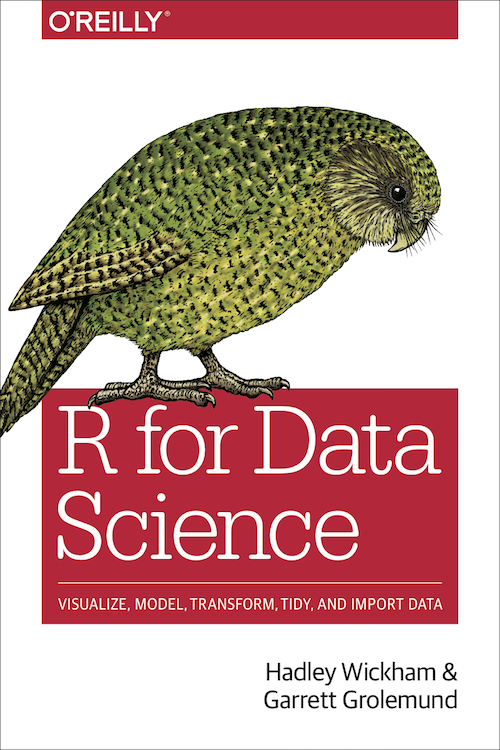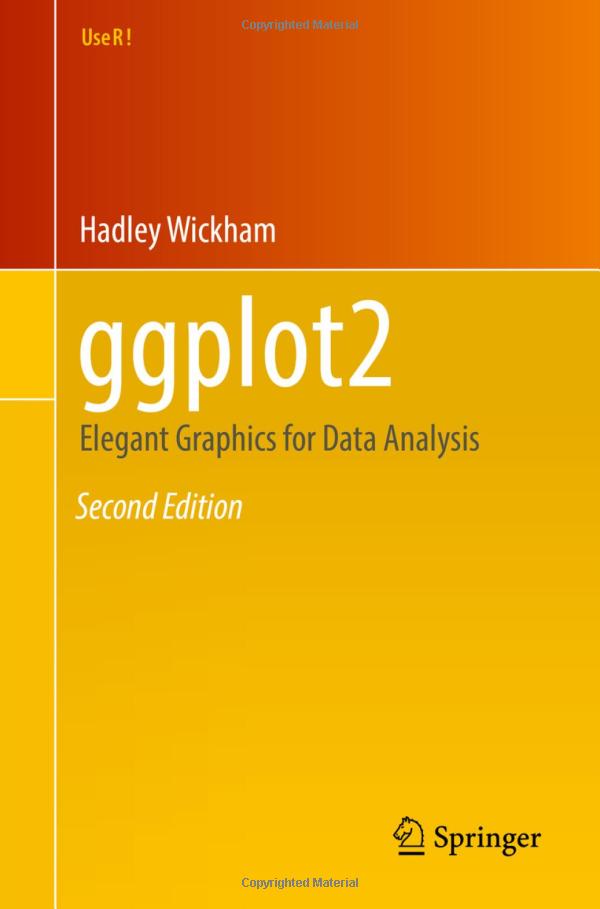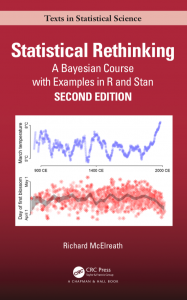What Next?
This book is far from a complete guide to R. But it can continue to be a reference to quickly look up commonly needed syntax. The quirks of R are easy to forget if you don’t use them frequently, especially if you’re more familiar with other programming languages like C, javascript, or python.
 The next book I recommend is R for Data Science (R4DS). It will walk you through working with data in R: reading files, cleaning data, making graphs, and a bit of modelling. I purposefully tried to minimize overlap with R4DS, so consider this book a companion to it.
The next book I recommend is R for Data Science (R4DS). It will walk you through working with data in R: reading files, cleaning data, making graphs, and a bit of modelling. I purposefully tried to minimize overlap with R4DS, so consider this book a companion to it.
 For an overview on making graphs in R, I recommend ggplot2: Elegant Graphics for Data Analysis. It goes through different graph types, how to combine them, scales, statistical summaries, multi-plot arrangements, aesthetics, and more. Also, check out solutions to the book’s exercises by Howard Baek.
For an overview on making graphs in R, I recommend ggplot2: Elegant Graphics for Data Analysis. It goes through different graph types, how to combine them, scales, statistical summaries, multi-plot arrangements, aesthetics, and more. Also, check out solutions to the book’s exercises by Howard Baek.
 If you want to learn Bayesian statistics and modelling, Statistical Rethinking recoded is highly recommended. The original book, Statistical Rethinking, teaches with base-R examples, and Statistical Rethinking recoded has updated the book’s examples for the tidyverse.
If you want to learn Bayesian statistics and modelling, Statistical Rethinking recoded is highly recommended. The original book, Statistical Rethinking, teaches with base-R examples, and Statistical Rethinking recoded has updated the book’s examples for the tidyverse.